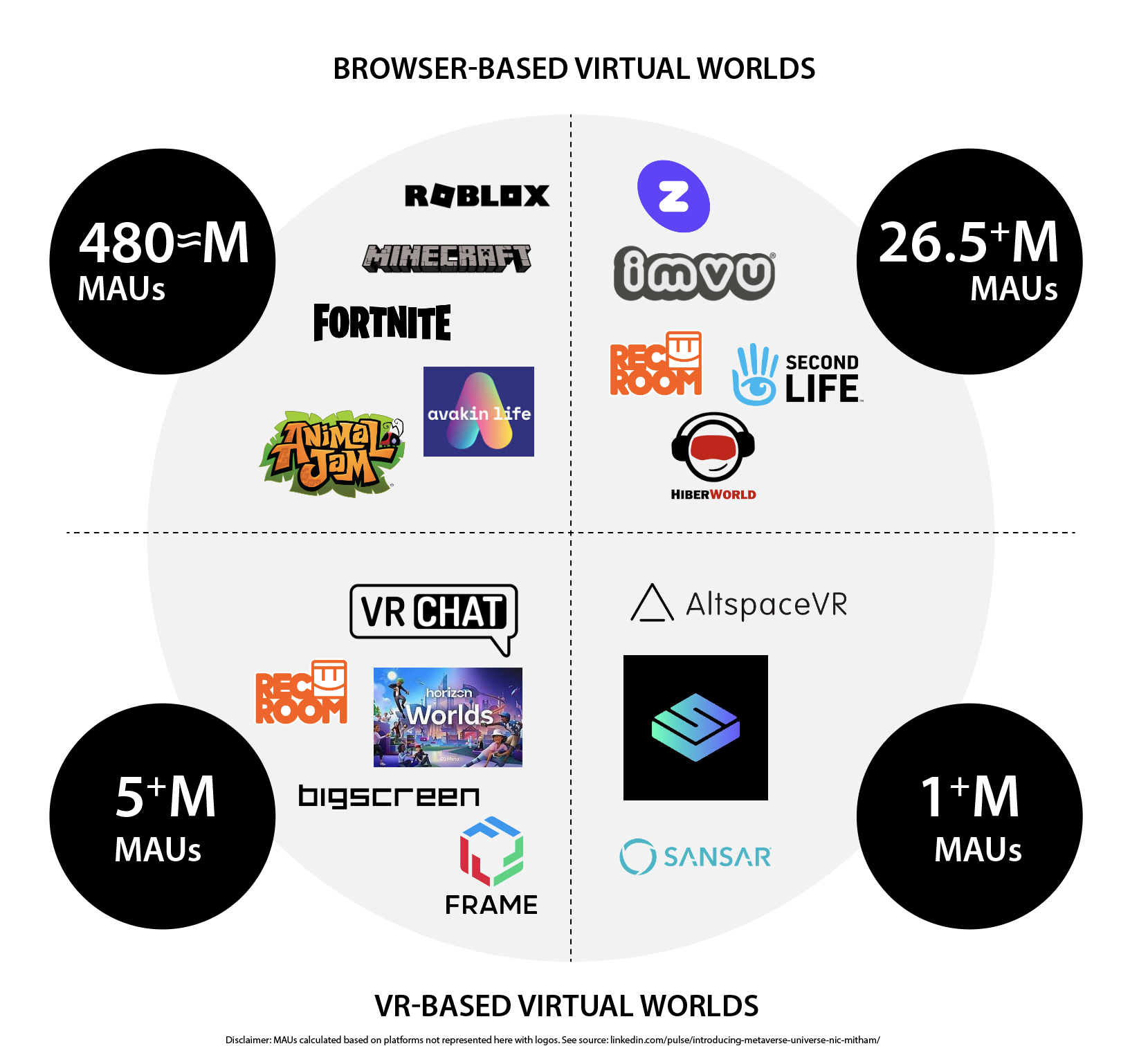One of the hottest topics in the tech world, the metaverse seems to have one part of the world wondering what it is, another participating or helping create it, and another group that’s exploring its business implications. With the recent controversial renaming of one social media tech giant, along with other players in the space ramping up metaverse divisions, including video game producers, it seems that the metaverse is here to stay.
In this five-part blog series, we’ll define the metaverse, dive into related topics including augmented reality (AR), crypto, and explore the role of AI in the metaverse experience. While the future of the metaverse is still uncertain, we’ll look at what it might look like including its business implications.
We’ll cover in this initial blog:
- What’s the metaverse?
- What will the near future look like for mixed reality?
- How can enterprises prepare for the metaverse?
- What we’ll cover in the rest of the series
What is the Metaverse?
The metaverse is physical reality merged with the digital universe. It includes shared virtual 3D worlds that are interactive, immersive, and collaborative. What does that exactly mean? While the idea of one single metaverse is still an evolving one and isn’t real yet, we can envision it as layering the digital world on top of the physical world.
For instance, imagine walking outside in the real world and still interacting with the digital world through smart phones or other devices. PokemonGo is just one example of this, though now we also have virtual worlds, browser-based experiences, and various gaming examples.
The space is highly decentralized with multiple avenues and platforms that fit under a broader bucket called “the metaverse.” The following diagram highlights the complexity of the space:

While the metaverse is still an evolving concept, developers of the technology to support it have hinted at what a more mature version of the space will look like in the next few years.
What will the near future look like for mixed reality?
The Facebook name change to Meta still has everyone talking about the metaverse. Signaling a reprioritization of resources towards the metaverse, Meta wants to create immersive, virtual versions of the things we do every day, from working in an office and socializing after hours to shopping on the weekends and traveling for vacation.
Other companies are eyeing the potential. Tim Sweeny, the CEO of Epic, creator of the widely popular video game Fortnite that’s evolved into an even bigger social media platform than the mainstay brands, said the metaverse is a multi-trillion-dollar opportunity. Sweeny believes that the internet is broken and envisions the metaverse as a seamless experience that’ll fix it.
From playing a game with friends to test driving a new car in virtual reality, we can expect our movement in the digital realm to become even more borderless. As a result, advertising, among other revenue-generating efforts, will change to become more than the media we are accustomed to today. And it’s going to be an experience one can reach from anywhere.
How can enterprises prepare for the metaverse?
The businesses that become and remain customer-focused will win in the metaverse. The most attractive aspect of the metaverse is that it decentralizes everything, empowering users with the freedom to create, explore, and engage. As a result, it’s a boon to businesses that have long relied on intermediaries. The metaverse will break down barriers and give them direct access to consumers.
For B2B, it’s a bit different. In one way, enterprises will most likely not have the full capability to capitalize on the opportunity. To compete, they’ll need to account for certain aspects of the metaverse, from NFTs and cryptocurrency to synthetic voice, hyperreal avatars, and content creation. Partnerships and acquisitions will become necessary for those who do not want to miss out on the opportunity.
One of the most significant issues with enterprises operating in a blended physical and digital reality is the added complexity it fosters with data. Managing the assets people interact with and its associated data will be crucial to understanding engagement and offering the best experience possible. Artificial intelligence can help solve this complexity, acting as the primary mechanism to make the metaverse manageable, measurable, and ethical.
What we’ll cover in the rest of the series
The metaverse will comprise many emerging and evolving technologies that are still new to the world. In this series, we’ll dive into these different technologies and more.
Immersive and Augmented Reality in the Metaverse
What does an immersive experience look like, and how will it become a staple of future entertainment? We’ll look at some examples.
Crypto, NFTs, and the Metaverse–How They Will Work Together
Cryptocurrencies and NFTs will serve an essential role in the metaverse for transactional engagements and protecting unique IP beyond the lifespan of a brand.
Artificial Intelligence in the Metaverse
Artificial intelligence will help act as the glue that enables the integration between the physical and digital worlds in various ways. Come find out some of the use cases for AI in the metaverse.
Metaverse Personas–Get Ready to Meet Your Virtual Self
We’ll define metaverse personas, their implications, the role they will play in the metaverse, and how AI can enable more of these immersive experiences.
Metaverse Roadmap: What the Future Holds
We’ll explore where the metaverse is headed, detail Veritone’s vision for the future of the metaverse, and introduce some of the tools that can make it all possible.